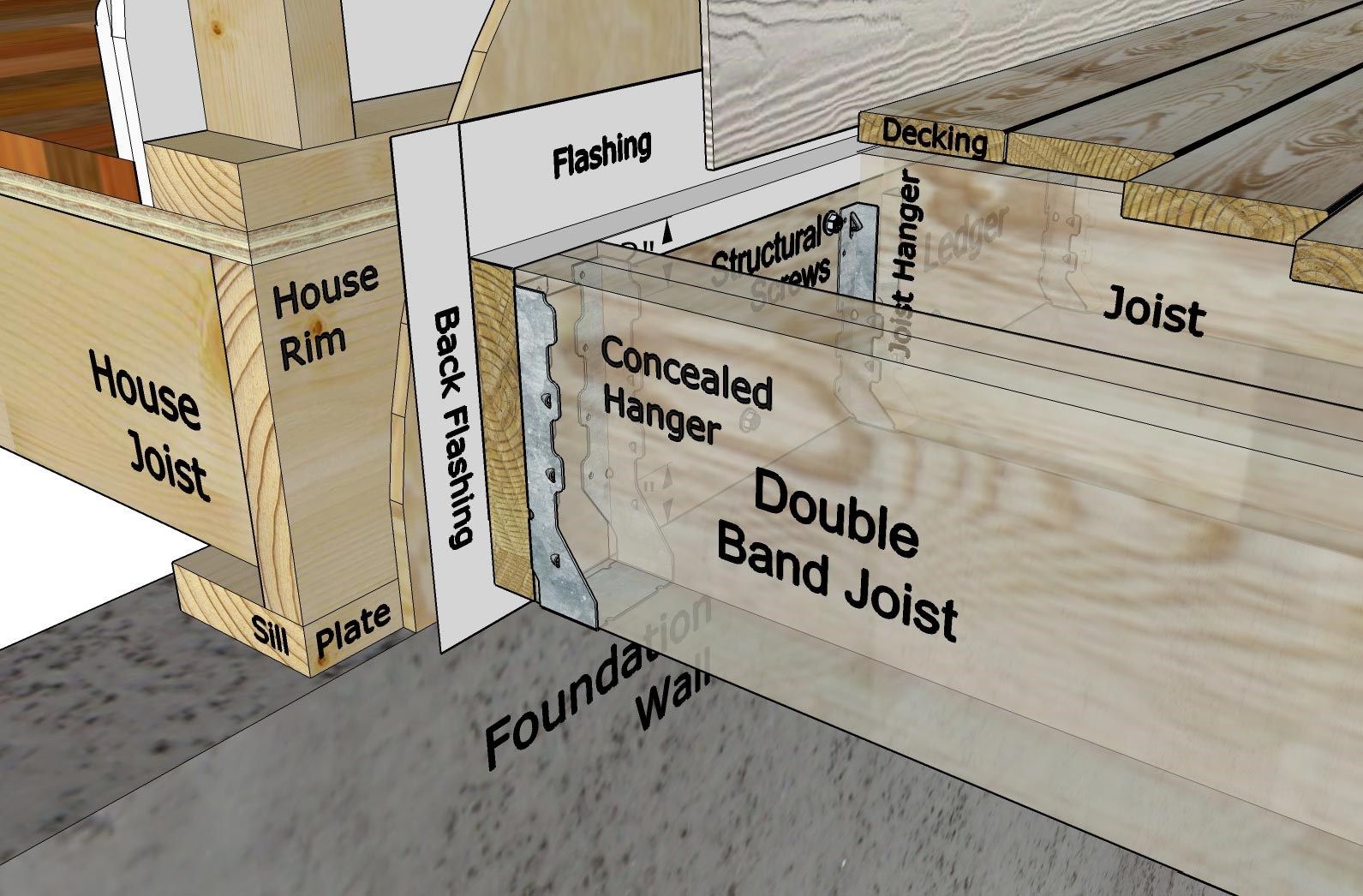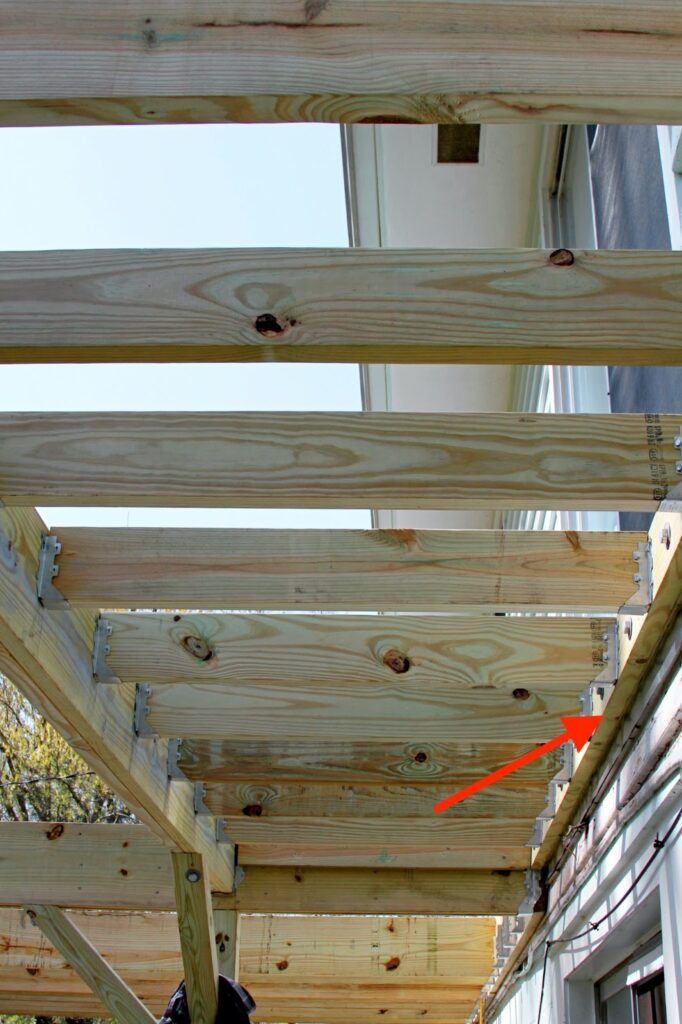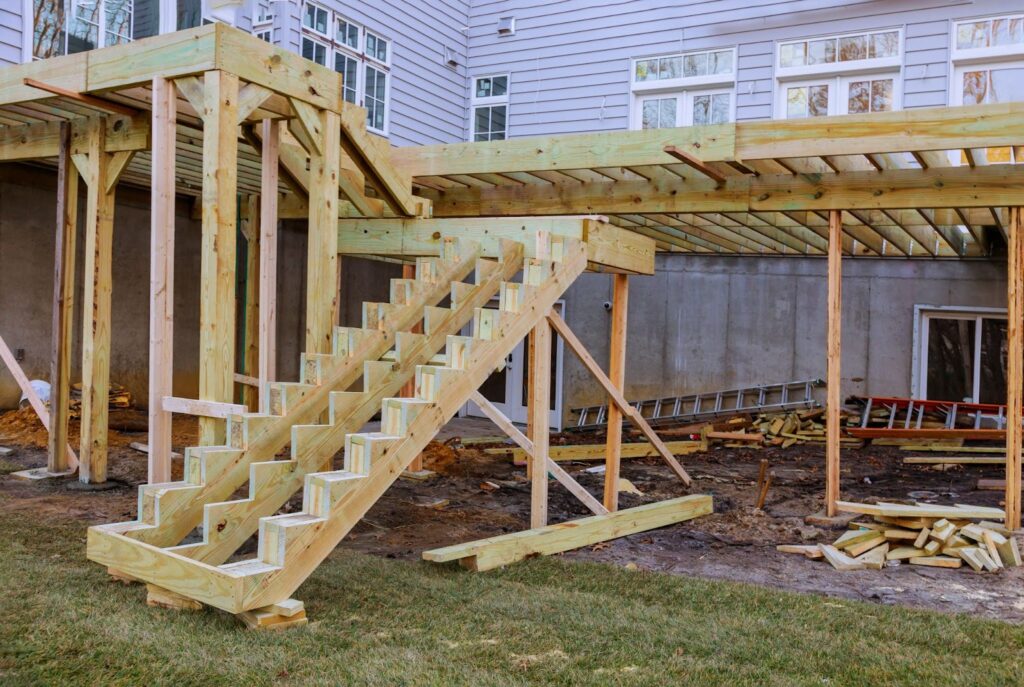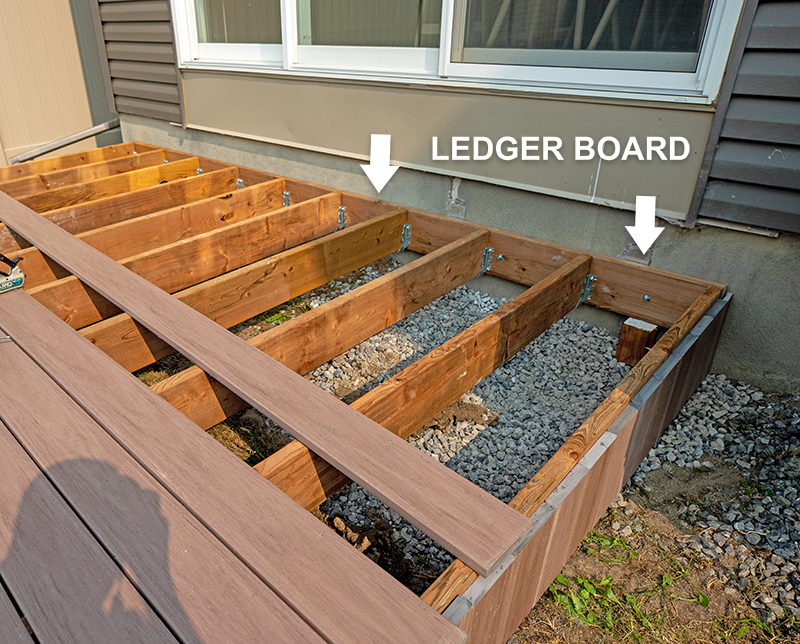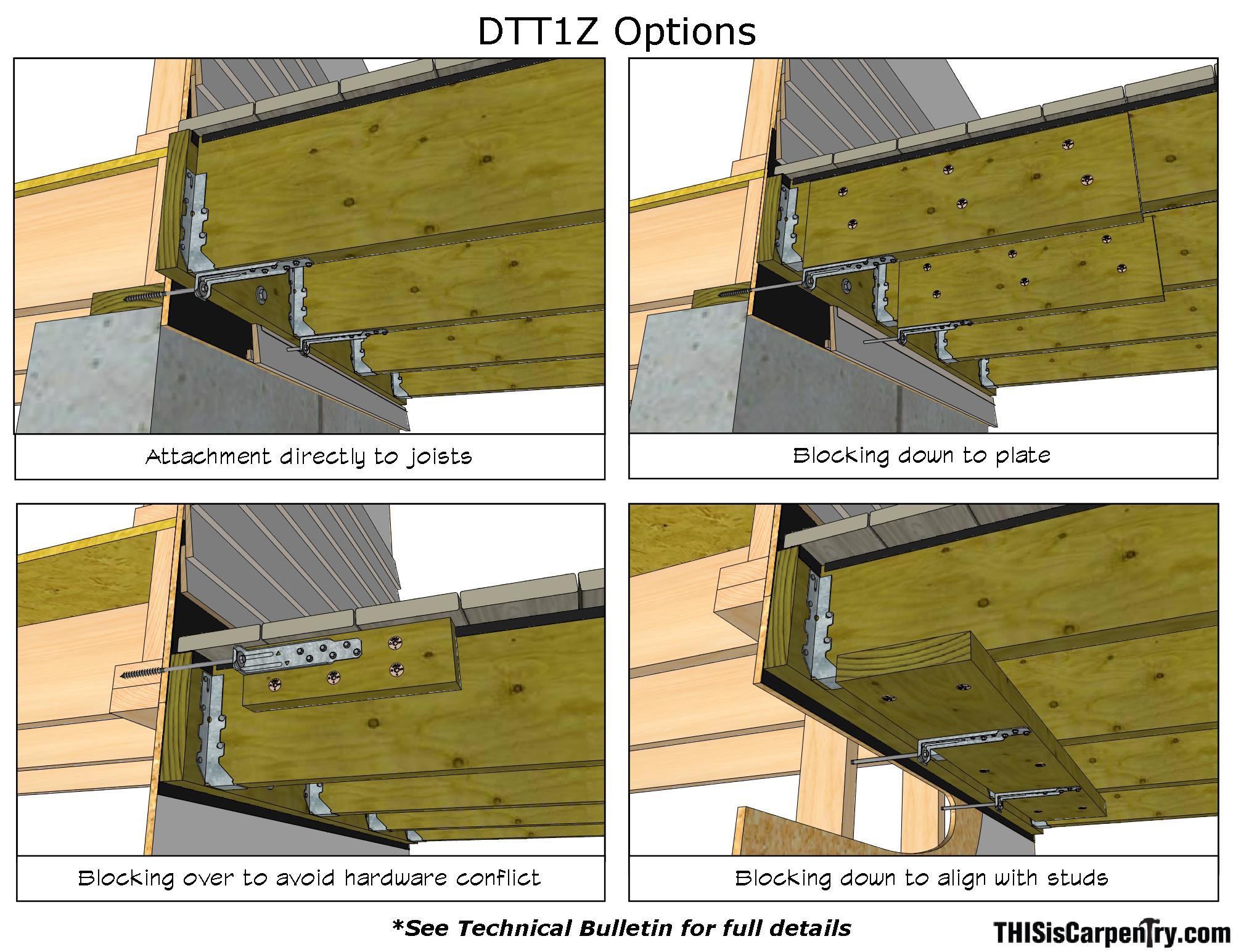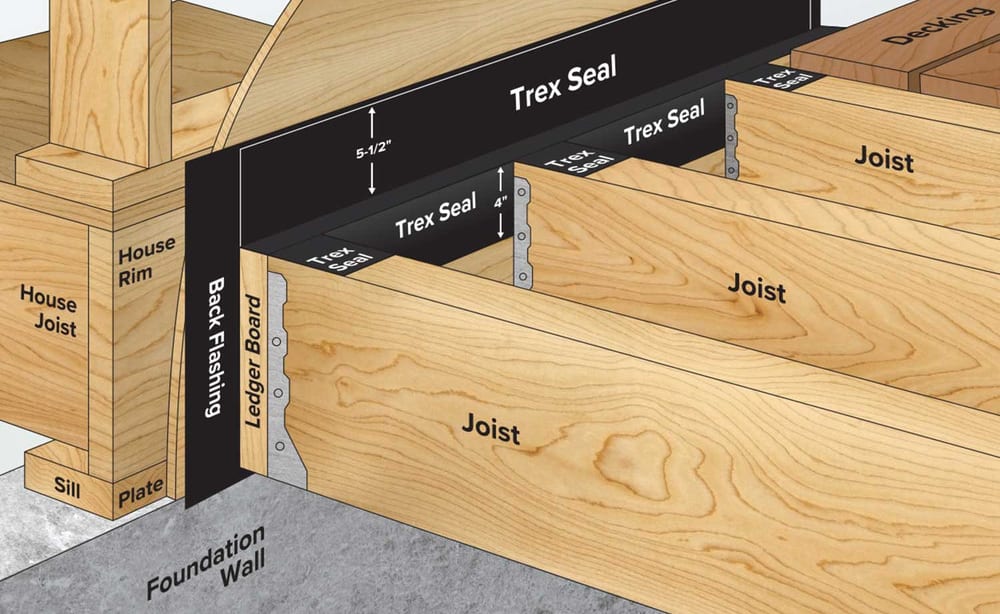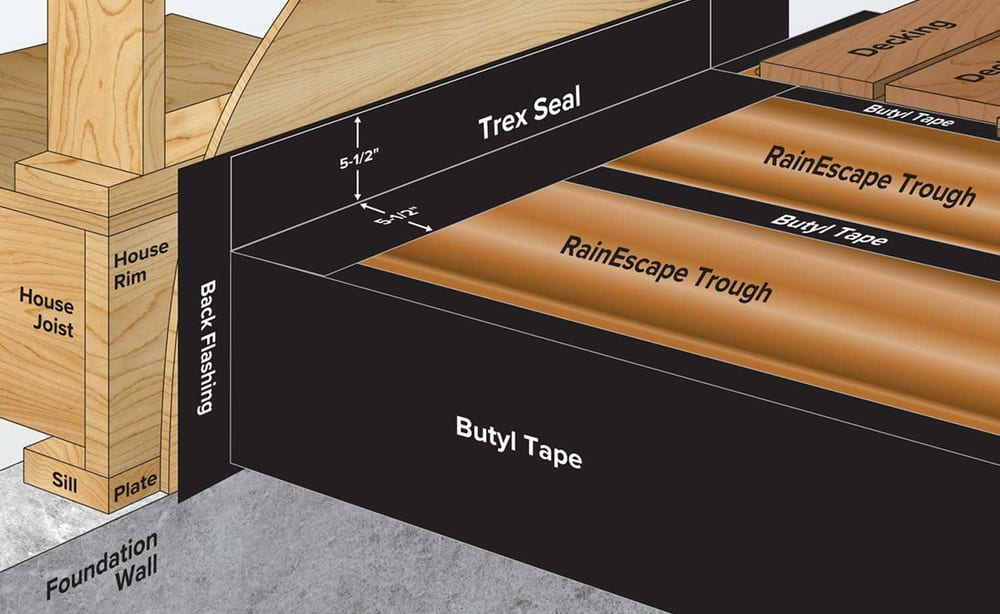Can You Double Your Ledger Deck

The late afternoon sun cast long shadows across the weathered planks of the deck, painting the swirling grain of the wood in hues of gold and amber. A gentle breeze rustled through the leaves of the nearby oak tree, carrying with it the scent of freshly cut grass and the promise of a summer evening well spent. It's a familiar scene for many homeowners, a cherished space for relaxation and connection, but beneath the surface, a nagging question often lingers: could this haven be even better, even bigger?
The question of expanding a ledger deck, essentially doubling its size, is a tantalizing prospect for many homeowners yearning for more outdoor living space. This article explores the feasibility, challenges, and rewards of undertaking such a project, offering insights into the structural considerations, regulatory hurdles, and design possibilities involved in transforming a standard deck into an expansive outdoor oasis.
The Allure of Expansion
Why the desire to double, or even significantly expand, an existing ledger deck? The reasons are varied, reflecting the diverse lifestyles and evolving needs of homeowners. Some may dream of hosting larger gatherings, envisioning spacious seating areas and outdoor kitchens where friends and family can comfortably congregate.
Others might seek a dedicated play area for children, a tranquil yoga space amidst the fresh air, or simply a more generous canvas for their outdoor furniture and potted plants.
As home values rise, expanding outdoor living spaces often becomes a strategic investment, increasing the property's appeal and marketability.
Understanding the Ledger Connection
The ledger board is the crucial interface between the deck and the house, securely fastened to the home's structure and supporting one side of the deck. Its integrity is paramount, as any failure could lead to catastrophic consequences. Expanding a ledger deck places significantly increased stress on this connection, demanding careful assessment and meticulous execution.
Before even considering expansion, a thorough inspection of the existing ledger board is essential. This should be performed by a qualified structural engineer or experienced deck builder, who can assess its condition, materials, and attachment method.
In many cases, the existing ledger board may need to be replaced or reinforced to adequately support the increased load.
Structural Considerations and Code Compliance
Doubling the size of a deck isn't simply a matter of adding more planks. It involves a complex interplay of structural forces, requiring careful planning and adherence to local building codes. Building codes exist to protect safety and they specify the minimum requirements for deck construction, including beam spans, joist spacing, and railing heights.
These codes vary by region, so it's crucial to consult with your local building department to understand the specific regulations that apply to your project. Permits are typically required for deck expansions, and inspections are conducted to ensure compliance with the codes.
Ignoring these regulations can result in costly rework and potential safety hazards.
Footings and Support Posts
The foundation of any deck is its footing system, which transfers the weight of the deck to the ground. Expanding a ledger deck necessitates additional footings and support posts to handle the increased load.
The size and spacing of these footings depend on factors such as soil conditions, deck size, and the weight of the materials used. Frost depth is a critical consideration, as footings must extend below the frost line to prevent heaving during freeze-thaw cycles.
Properly sized and installed footings are essential for the long-term stability and safety of the deck.
Beam and Joist Sizing
Beams and joists are the structural members that support the deck surface. Increasing the size of the deck requires careful calculation of beam and joist sizes to ensure they can adequately handle the increased span and load.
Factors such as wood species, spacing, and anticipated live load (people and furniture) must be considered. Undersized beams and joists can lead to sagging, bouncing, and even collapse.
Consulting with a structural engineer or experienced deck builder is essential to determine the appropriate beam and joist sizing for your specific project.
Design Considerations and Material Choices
Expanding a deck provides an opportunity to reimagine your outdoor living space and create a design that perfectly suits your needs and aesthetic preferences. Consider the intended use of the expanded deck and how it will integrate with your existing home and landscape.
Will you create distinct zones for dining, lounging, and cooking? Do you want to incorporate features such as built-in seating, planters, or a fire pit? Thoughtful planning can transform your deck into a functional and beautiful extension of your home.
Choosing the right materials is equally important. Pressure-treated lumber remains a popular and cost-effective choice, while composite decking offers durability and low maintenance.
Cost and ROI
Expanding a ledger deck is a significant investment, and it's important to carefully consider the costs involved. The cost of materials, labor, permits, and design fees can vary widely depending on the size and complexity of the project.
Obtain multiple quotes from qualified contractors and carefully review their proposals before making a decision. While the upfront cost can be substantial, a well-designed and properly constructed deck expansion can significantly enhance your home's value and enjoyment.
According to the National Association of Realtors, homeowners can often recoup a significant portion of their investment in outdoor living spaces when they sell their homes.
A Word of Caution: DIY vs. Professional Help
While some homeowners may be tempted to tackle a deck expansion as a DIY project, it's important to recognize the complexity and potential risks involved. Structural calculations, code compliance, and proper construction techniques are essential for ensuring the safety and longevity of the deck.
A minor error can have major consequences, potentially leading to structural failure and personal injury. Unless you possess significant experience in deck building and a thorough understanding of building codes, it's generally advisable to hire a qualified contractor.
A professional contractor can ensure that the project is completed safely, efficiently, and in compliance with all applicable regulations. Investing in professional help is often the best way to protect your investment and ensure your peace of mind.
Beyond Size: Enhancing the Deck Experience
Ultimately, the decision to double your ledger deck is about more than just square footage. It's about creating an outdoor space that enhances your lifestyle and brings joy to your everyday life. Consider incorporating features that elevate the deck experience, such as comfortable seating, ambient lighting, and attractive landscaping.
Adding a pergola or shade sail can provide relief from the sun, while a built-in fire pit can extend the use of the deck into the cooler months. Small details can make a big difference in creating a welcoming and inviting outdoor oasis.
By focusing on both form and function, you can transform your deck into a true extension of your home.
As the sun dips below the horizon, casting the newly expanded deck in a soft, golden glow, the possibilities seem endless. Whether it's hosting a lively gathering, enjoying a quiet evening with loved ones, or simply savoring the beauty of the natural world, the expanded deck becomes a canvas for creating lasting memories. The journey may have been challenging, but the reward is a space that truly enhances the quality of life, a testament to the enduring appeal of outdoor living.


